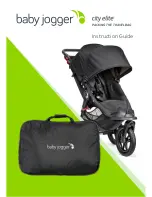
2
PLANNING THE INSTALLATION
Planning for the Pilot Installation
1. The regulator main valve must be located in an
accessible straight run of horizontal piping.
NOTE: Main valve must be installed with diaphragm
located on bottom, as shown in Main Valve Installation
illustration, page 3.
2. Allow clearance on top of the main valve to remove
the cover plate to inspect and service the valve.
3. Allow clearance under the main valve diaphragm
cover to replace diaphragms and drop out the stem
for service.
4. Piping should be sized per good engineering practice.
HVAC applications generally use 6,000 FPM velocity.
Industrial applications generally use 8,000 to 10,000
FPM.
5. Blow out all piping with steam or compressed air before
installing the main valve to remove mill scale and dirt.
6. Use long radius elbows in the low pressure piping.
Avoid the use of bull-headed tees.
7. Provide a bypass line with a globe valve to allow
inspection without interrupting service.
8. Install pressure gauges on inlet and outlet sides of
regulator to indicate system performance.
9. Install drip traps to prevent:
• Accumulation of condensate that can cause water
hammer and destroy the main valve and pilot
diaphragms.
• Slow response times that cause temperature or
pressure fluctuations.
10. Install "Y" Strainers in steam lines with the dirt pocket
turned to the side to prevent collection of condensate
that can be carried into the regulator and cause water
hammer.
11. Install pressure relief valves in accordance with local
and national codes. The relief valve must be capable
of passing the full capacity of the regulator with its
largest seat trim.
Select the relief valve opening set point pressure
based on the downstream pressure from the regulator.
The actual relief valve set point pressure depends on
the relationship of the flow (load) to the main valve
rated capacity.
For systems with spring or air pilots:
Determine the relief pressure set point pressure for
systems as follows:
For systems with temperature pilots only:
The steam system relief valve opening set point
pressure is based on the supply steam inlet pressure
to the regulator and must be set as follows:
12. Locate temperature regulators close to the temperature
sensing location. The temperature pilot capillary tube
must allow the sensing bulb to be fully inserted into
the system fluid.
Downstream
Flow
Relief valve
System
(Load)
opening set
Pressure (DSP)
Condition
point pressure
< 35 psig
< 50% of capacity
DSP + 5 psig
< 35 psig
≥
51% of capacity
(1.1 x DSP) + 5 psig
≥
36 psig
< 50% of capacity
DSP + 10 psig
≥
36 psig
≥
51% of capacity (1.1 x DSP) + 10 psig
1. The pilot valves can be installed on either side of the
main valve. The main valve is shipped with the U-tubing
and the bleed orifice installed for left-hand side
mounting of the pilot valves. (U-tubing is mounted on
the right-hand side and the bleed orifice is installed
on the left-hand side.)
If right-hand side mounting of the pilot(s) is desired,
the U-tubing and the bleed orifice must be relocated
to the opposite sides of the main valve.
Note: Right-hand side and left-hand side positioning
is determined when the main valve inlet directly faces
the observer.
2. Determine which pilot(s) are to be used for the instal-
lation. Multiple pilots can be used in combination on
one main valve. Mount the pilot(s) as follows:
• SLD Solenoid Pilot
Always mount closest to the main valve.
• SPS Spring or AP Air Pressure Pilots
When used in combination with other pilots,
always mount spring or air pilots furthest from
the main valve.
• STPA Temperature Pilot
When used with pressure pilot
mount closest to
main valve.
When used with pressure and solenoid pilots –
mount between pressure and solenoid pilots.
• 315 PNT or 240PNT Pneumatic Temperature
Pilots
Mounted remotely from main valve.
• GT610-IP Electronic Pilot (used with customer
supplied temperature sensor and controller)
Mounted remotely from main valve.
3. Hardware kits containing steel pipe nipples and
copper tube lines are required to mount the pilots.
Refer to "Mounting Hardware for Pilot Installation"
Page 4.
Planning for the Main Valve Installation
Supply Steam
Relief valve
Inlet Pressure
opening set
(SSIP)
point pressure
< 35 psig
SSIP + 5 psig
≥
36 psig
SSIP + 10 psig



































